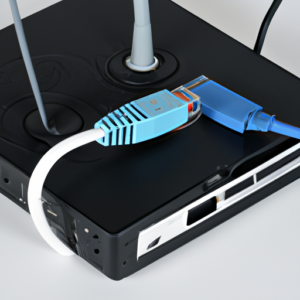Welcome to My Guide on Leveraging NAS for Backup
Hey there, it’s great to have you here! I’m excited to share with you some expert advice on leveraging network-attached storage (NAS) for backup. Before we dive in, let me define what leverage and NAS means. Leverage refers to the use of borrowed capital for investment with the aim of increasing potential returns. NAS, on the other hand, is a storage device that allows multiple users and various applications to access data through a network.
Why Leveraging NAS for Backup Is a Game-Changer
Let me tell you, leveraging NAS for backup is one of the smartest decisions you can make, and here’s why:
Firstly, it’s cost-efficient. You can avoid expensive cloud services or investing in physical backup disks. NAS provides an affordable solution for long-term data storage without sacrificing quality.
Secondly, it’s flexible. You can retrieve data from multiple devices, regardless of their operating system or location. This means that you can access your data from anywhere, anytime, as long as you have internet connectivity. It also provides the freedom to scale your backup storage according to your needs, without having to replace physical hardware or configure additional software.
Lastly, it’s secure. NAS devices come with advanced security features such as encryption, access restrictions, and network firewalls. This ensures that your data is protected from cyberattacks, unauthorized access, or data breaches.

Leaving data protection to chance can result in significant data loss and even legal complications. Leveraging NAS for backup provides a robust, cost-efficient, flexible, and secure solution for your data storage and recovery needs.
Leverage Your NAS for Backup Like a Pro: Easy Steps to Follow
In this section, I will share with you the steps that you need to follow if you want to leverage your NAS for backup. These steps are easy to understand and follow, and you will be able to do it even if you are not a tech-savvy person.
Step 1: Choose a Storage Device
The first step is to determine the type of storage device you want to use. You can choose between external hard drives, USB flash drives or network-attached storage (NAS) devices. I recommend using a NAS device for backup because it’s more cost-efficient and reliable than other storage devices.
Step 2: Purchase Network-Attached Storage (NAS)
Once you have decided to use a NAS device, the next step is to purchase one. Ideally, you want to choose a device that has enough storage space to accommodate all your backup needs. Make sure to read reviews or compare prices from different vendors to ensure that you’re getting the best deal.
Step 3: Install the NAS System
Installation of the NAS system is a straightforward process, even if you’re not familiar with networking or computer systems. Simply connect the device to your router, then connect the power cable, and you’re good to go.
Step 4: Configure the NAS System
After the NAS system is installed, you need to configure it to start backing up your files automatically. Depending on the brand of your NAS device, you may have to access its web-based management interface to configure the backup settings. You can also set up your backup client or software to automatically back up your data to your NAS device.
Once you’ve completed these four easy steps, you’re all set to leverage your NAS for backup like a pro. The benefits of using a NAS device for backup include stability, cost efficiency, and flexibility. With a reliable NAS system, you can prevent data loss, recover from unexpected incidents, and keep your data safe and secure.
Final Thoughts: NAS Backup Done Right
Well, that’s it for me! In conclusion, leveraging NAS for backup is a cost-efficient, flexible, and secure solution that we recommend to anyone looking for data backup. With NAS, you can store files, access them quickly and easily, and most importantly, keep them safe from harm.
If you’re considering using NAS for backup, keep in mind that there are a few steps you need to take first. Start by choosing a storage device that meets your specific needs. Then, purchase a NAS system and install it according to the manufacturer’s instructions. Once installed, configure the system to your liking so that it works best for you.
All in all, leveraging NAS for backup is a simple process that can save you time, money, and a lot of hassle in the long run. So, take our advice and give it a try today! You won’t be sorry.